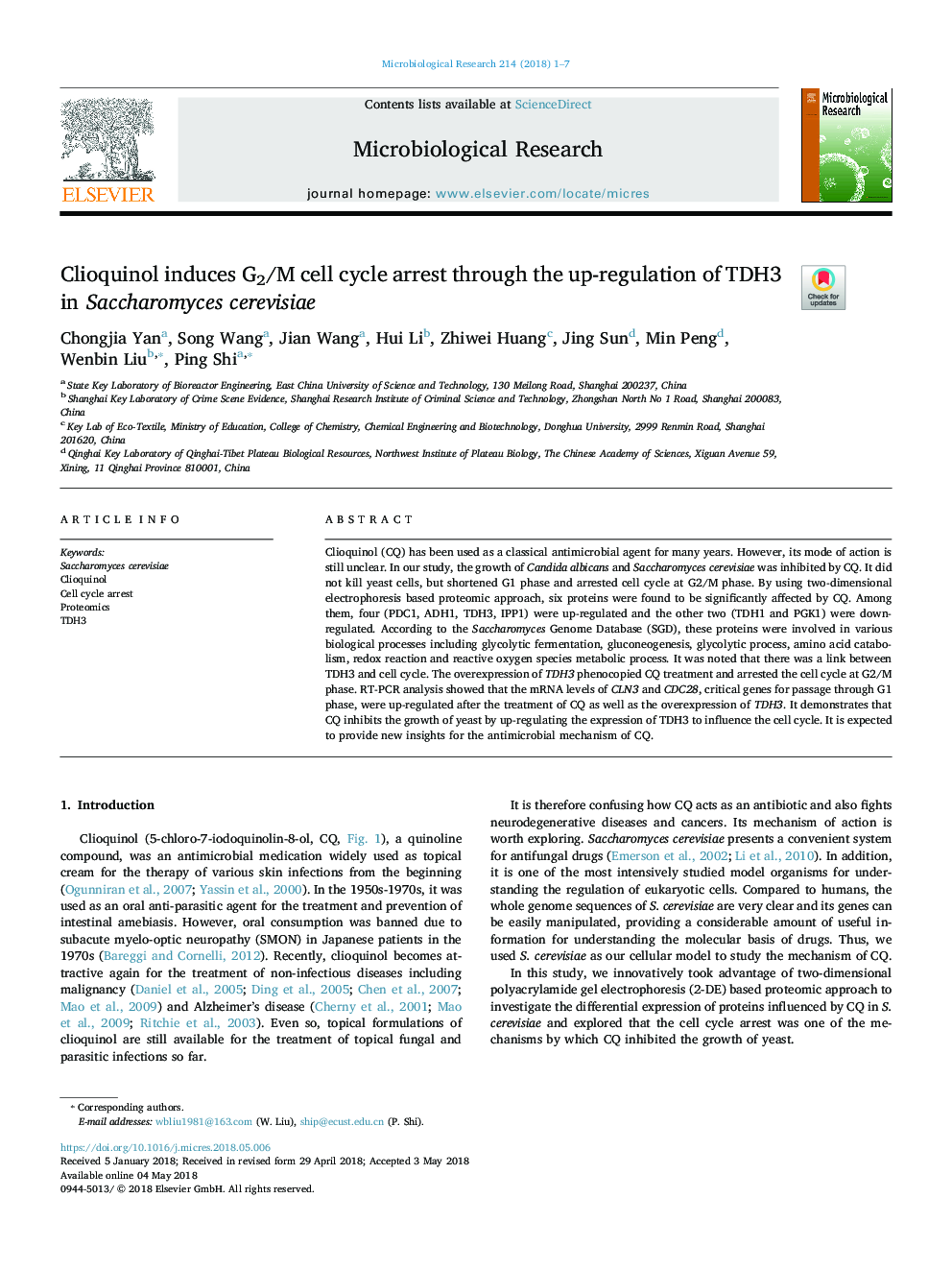| کد مقاله | کد نشریه | سال انتشار | مقاله انگلیسی | نسخه تمام متن |
|---|---|---|---|---|
| 8422658 | 1545961 | 2018 | 7 صفحه PDF | دانلود رایگان |
عنوان انگلیسی مقاله ISI
Clioquinol induces G2/M cell cycle arrest through the up-regulation of TDH3 in Saccharomyces cerevisiae
دانلود مقاله + سفارش ترجمه
دانلود مقاله ISI انگلیسی
رایگان برای ایرانیان
کلمات کلیدی
موضوعات مرتبط
علوم زیستی و بیوفناوری
بیوشیمی، ژنتیک و زیست شناسی مولکولی
بیوتکنولوژی یا زیستفناوری
پیش نمایش صفحه اول مقاله

چکیده انگلیسی
Clioquinol (CQ) has been used as a classical antimicrobial agent for many years. However, its mode of action is still unclear. In our study, the growth of Candida albicans and Saccharomyces cerevisiae was inhibited by CQ. It did not kill yeast cells, but shortened G1 phase and arrested cell cycle at G2/M phase. By using two-dimensional electrophoresis based proteomic approach, six proteins were found to be significantly affected by CQ. Among them, four (PDC1, ADH1, TDH3, IPP1) were up-regulated and the other two (TDH1 and PGK1) were down-regulated. According to the Saccharomyces Genome Database (SGD), these proteins were involved in various biological processes including glycolytic fermentation, gluconeogenesis, glycolytic process, amino acid catabolism, redox reaction and reactive oxygen species metabolic process. It was noted that there was a link between TDH3 and cell cycle. The overexpression of TDH3 phenocopied CQ treatment and arrested the cell cycle at G2/M phase. RT-PCR analysis showed that the mRNA levels of CLN3 and CDC28, critical genes for passage through G1 phase, were up-regulated after the treatment of CQ as well as the overexpression of TDH3. It demonstrates that CQ inhibits the growth of yeast by up-regulating the expression of TDH3 to influence the cell cycle. It is expected to provide new insights for the antimicrobial mechanism of CQ.
ناشر
Database: Elsevier - ScienceDirect (ساینس دایرکت)
Journal: Microbiological Research - Volume 214, September 2018, Pages 1-7
Journal: Microbiological Research - Volume 214, September 2018, Pages 1-7
نویسندگان
Chongjia Yan, Song Wang, Jian Wang, Hui Li, Zhiwei Huang, Jing Sun, Min Peng, Wenbin Liu, Ping Shi,